
“The residence of the discoverer of Andy Warhol and pope of surrealism, Alexander Iolas, was looted and vandalized after his death. But, as happens with all sites of martyrdom, over time, it became a temple that still attracts devotees.
BY DIEGO PARRADO
NOV 11, 2023
She called herself María Kallas, and like the soprano in Medea, unleashed a tragedy with her revenge. It happened in 1985. After the art dealer Alexander Iolas dismissed him for stealing from the Athenian mansion portrayed in this report, Maria Kallas, a transvestite whom he had employed there as an assistant, began to accuse him of drug trafficking, pedophilia, and smuggling of antiques. “Iolas’ Roman orgies,” “Iolas is rotten,” sentenced the chorus of sensationalist press in Greece. And such was the hatred that these newspapers generated that when Iolas died just two years later, that anger did not entirely disappear: it fell upon his famous art collection.
Unprotected by authorities, the art dealer’s residence on the outskirts of Athens was looted and vandalized. One day, intruders set fire to one of his Egyptian antiques. Another day, they burned his catalogs. They defiled it with graffiti, broke the furniture. But, as happens with all sites of martyrdom, over time Villa Iolas (as it began to be called) also attracted some devotees. “I visited it a few years ago and found Iolas’ address book. It had the numbers of Duchamp, Peggy Guggenheim in Venice, Magritte… He was a fascinating man,” says Greek artist Andreas Angelidakis, who was inspired by that clandestine visit to create several works. “Iolas’ house was a mecca of avant-garde in a Greece full of mediocrity and homophobia,” says also Greek artist Angelo Plessas when talking about his visit. “I was a child, but I remember very well the harshness of the attacks and slanders in the press that led to its abandonment.”
If in its decline Iolas’ mansion became a symbol of his fall, it was because before that, it was a symbol of his greatness. Eleni Coutsoudis, niece and heir of the art dealer, explains in the documentary ‘Villa Iolas’ (2017) that Iolas’ father, an Egyptian cotton merchant, began building the house in 1950 on a plot of land in the Agia Paraskevi area, northwest of Athens. By then, the name of Alexander Iolas was already well known in the art world and, like the Macedonian king who inspired him, it was associated with numerous journeys. Born in Alexandria in 1907, Iolas was still named Constantinos Coutsoudis when, as a teenager, he became friends with Kavafis, the great poet of that city. It was Kavafis who encouraged him to move to Athens, a place where, encouraged this time by the prestigious conductor Dimitris Mitropoulos, he learned piano and took his first steps as a dancer. In 1930, he left Greece to study dance at Tatiana and Victor Gsovsky’s school in Berlin, but the rise of the Nazis (and the beating he claimed to have received from a group of them) made him move to Paris. There, his famous encounter with a painting by De Chirico in a gallery took place. “I had never seen a modern painting,” Iolas would recall. “The frequent visits I made there were the seed of my desire to be an art dealer.”
His good fortune followed him in 1935 to New York, where with his new name and after a decade of ballet in companies like Balanchine’s, he left dancing and began directing the Hugo Gallery, a gallery sponsored by the aristocrat Maria dei Principi Ruspoli (married to a great-grandson of Victor Hugo), and where Iolas’ commitment to surrealism fostered collections as significant as the De Menil family’s in Houston. Iolas exhibited Magritte, Max Ernst, Leonor Fini… And in 1952, the drawings inspired by Truman Capote by Warhol in what was the first exhibition of this artist, whom Iolas discovered and with whom he shared a taste for the marginal and the extravagant. “Andy adored Iolas,” writes Bob Colacello in his memoirs about his years with Warhol. “With his extravagant turquoise and emerald satin suits and matching upholstered platforms, he passed as one of his superstars.”
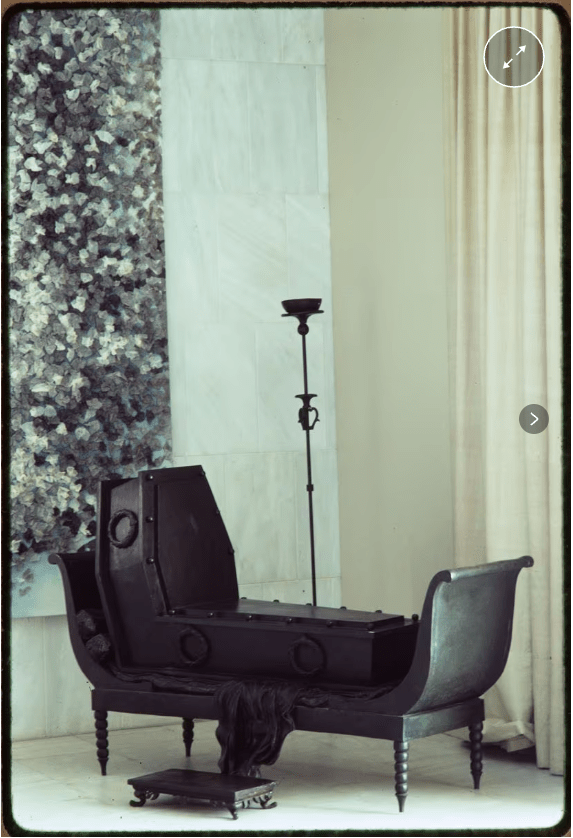
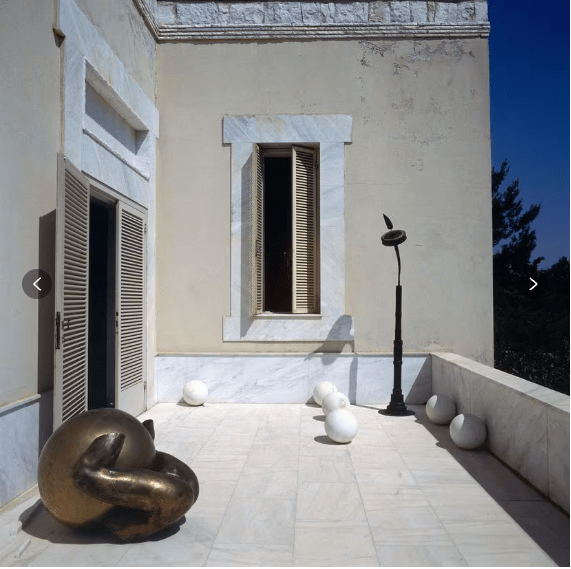
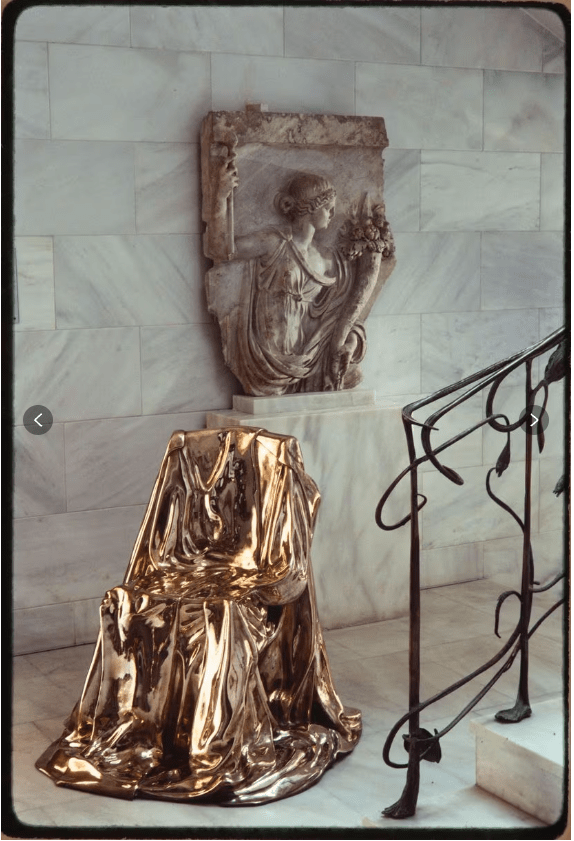

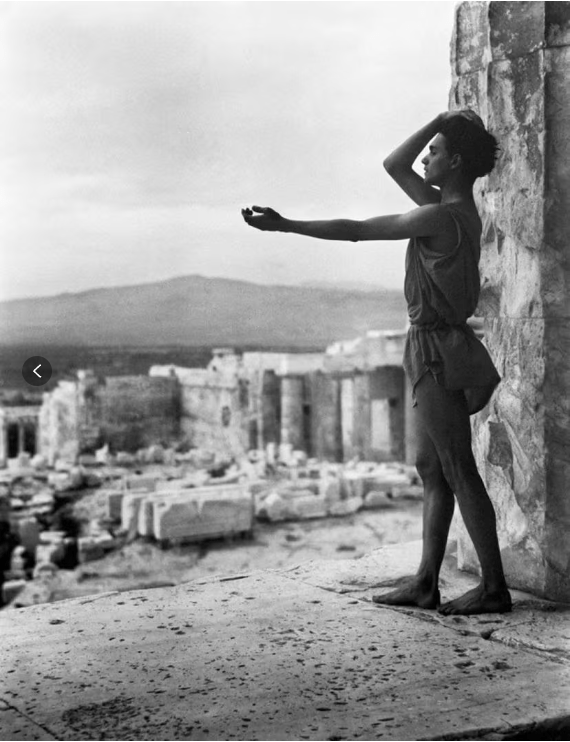
His golden age came in the 1960s with the expansion of the Iolas Gallery (now he was the owner), one of the first to grow through a network of international branches. Iolas opened in Paris, Milan, Geneva, Madrid… or in Athens, where he had returned every summer and where his mansion had been transformed as he succeeded. It’s not just that in 1971 Iolas had a second floor built, or that the initial surface of 50 square meters ended up being 35 times larger. Behind the engraved bronze gates of the house (partially believed to have been designed by Dimitri Pikionis, the architect of the modern accesses to the Acropolis), a myriad of unmatched artworks and antiques in Greece filled the various marble rooms and turned a visit to the kitchen into a master class in art: from a room dedicated to Ancient Greece, one moved to another about the Byzantine period or one with works by Picasso. The spaces featured in this report are a consequence of Max Ernst’s death in 1976, an event that led Iolas to close his galleries, as he had promised this artist he would when he passed away, and retire permanently in Athens. As Eleni Coutsoudis explains, her uncle didn’t know how to remain idle, so he started managing the mansion as if it were a new gallery, filling it with works by Warhol, Niki de Saint-Phalle, and other artists he had worked with. “I was tired of paying $700,000 in storage expenses,” Iolas said in 1981, downplaying the presence of those pieces in the house. But the excuse, if it was one, fell short when he invited artists like Marina Karella to create new works there, or when he designed surprising spaces like his bathroom, covered by a golden ceiling. “The house was the best gallery of all the ones he directed,” Coutsoudis believes.
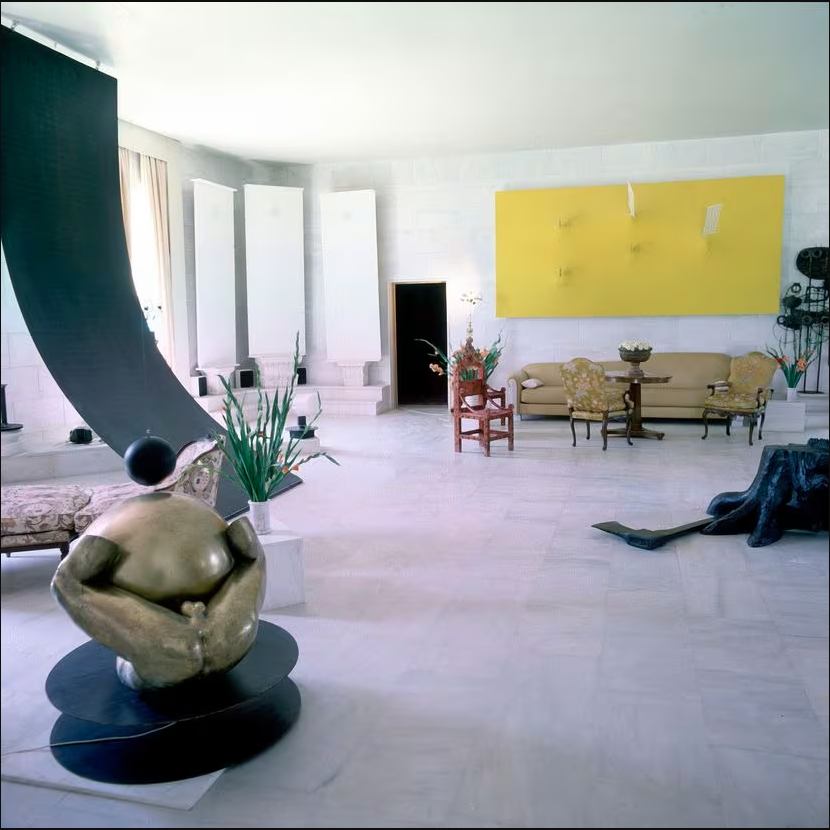

Iolas’ great mistake was opening the doors of this avant-garde realm to public opinion in Greece, through an interview given at his home in 1983. He boldly opined about the society of his country and, in particular, about the rise to power of President Papandreou. His statements didn’t sit well in Athens and made him uncomfortable for the Hellenic Republic: two years later, the aforementioned Maria Kallas only had to throw a match into the fire.
Alexander Iolas died from complications related to AIDS in a New York hospital on June 8, 1987, supposedly with the desire for his house to become a museum that would help redeem him in Greece. His niece denies this. “My uncle didn’t care about what happened to the house. He used to quote Louis XV: ‘After me, the deluge.’” Nonetheless, the theft of hundreds of artworks during the looting the house endured and the attacks by vandals made such a museum impossible. A significant part of the blame, due to their negligence, lies with the authorities of the municipality of Agia Paraskevi, the property’s owner since 2013. “The fact that the house remains in ruins demonstrates how, even in today’s Greece, Iolas remains marginalized,” says George Vamvakidis, co-founder and director of the Athens gallery, The Breeder, over the phone. “For the new generations of Greek artists, especially those who are queer, what happened to his house not only signifies a missed opportunity to see his collection but, on a symbolic level, to have a place where they could feel heard, seen, and celebrated.”
ORIGINAL POST: https://elpais.com/icon-design/2023-11-11/iolas-esta-podrido-ruinas-venganza-y-abandono-en-la-mansion-del-galerista-de-warhol.html
Ανακτήθηκε στις 12-12-2023 από https://iolasofficial.com/iolas-esta-podrido-ruinas-venganza-y-abandono-en-la-mansion-del-galerista-de-warhol/